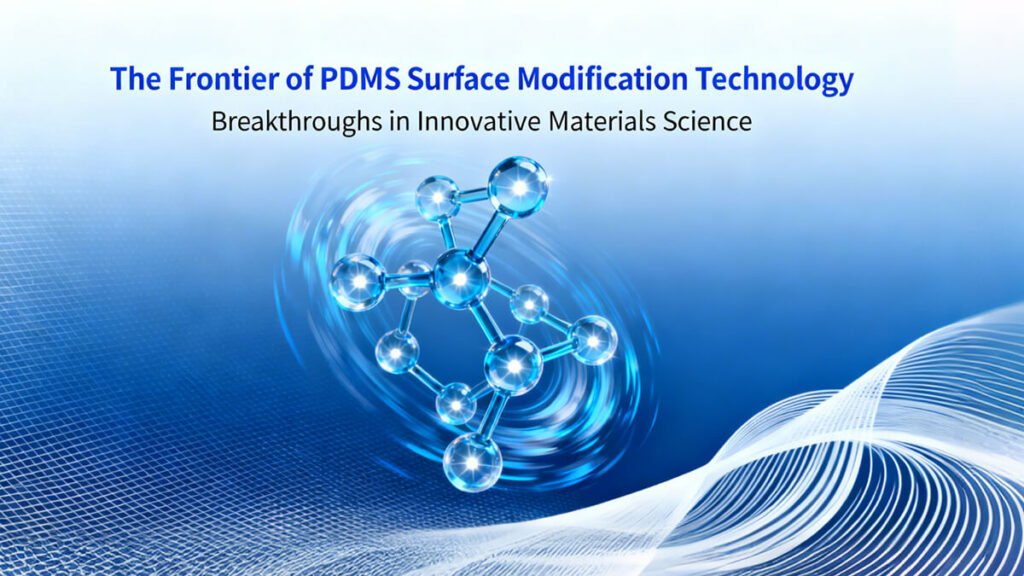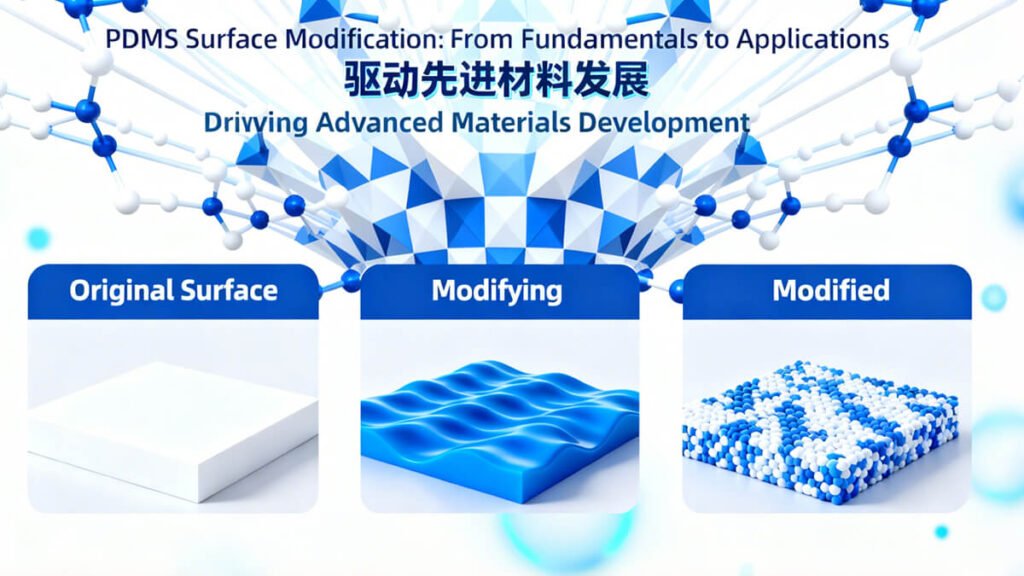PDMS Surface Modification Techniques : A Comprehensive Guide
- Blog
- August 16, 2023
- 11:22 am

Polydimethylsiloxane (PDMS) is a widely used silicone-based polymer with excellent optical clarity, flexibility, and chemical stability. However, its inherent hydrophobic surface properties often limit its performance in biomedical, microfluidic, and sensor applications. To overcome these challenges, Silico® PDMS surface modification techniques have been developed to enhance surface wettability, biocompatibility, adhesion, and functionalization.
In this article, we will explore the most effective PDMS surface treatment techniques, including plasma activation, UV/ozone treatment, chemical grafting, and hybrid coating methods. Whether you’re working in microfluidics, lab-on-a-chip manufacturing, or medical device production, these techniques — powered by Silico® materials — can help you achieve more durable and functional surfaces.
Table of Contents
- 1. Overview of PDMS Properties and Limitations
- 2. Why Surface Modification Is Necessary
- 3. Plasma Treatment and Surface Activation
- 4. UV/Ozone Treatment for Enhanced Wettability
- 5. Chemical Grafting and Silanization
- 6. Coating and Layer-by-Layer Deposition Methods
- 7. Hybrid and Advanced Surface Engineering
- 8. Applications in Microfluidics, Biomedical, and Sensor Systems
- 9. Future Trends in PDMS Surface Modification
- 10. Final Thoughts
1. Overview of PDMS Properties and Limitations
PDMS stands out for its cost-effectiveness, ease of fabrication, and biocompatibility, making it ideal for medical devices and research applications. But due to its low surface energy, untreated PDMS often shows weak adhesion and poor wettability.
By incorporating Silico® PDMS surface modification technologies, manufacturers can enhance adhesion to various substrates, improve hydrophilicity, and stabilize surface chemistry for advanced device performance.
2. Why Surface Modification Is Necessary
PDMS surface modification enhances its functionality in several ways:
Improves hydrophilicity and wettability
Enhances bonding strength to glass, silicon, or other substrates
Increases biocompatibility for cell culture and tissue engineering
Allows chemical functionalization for biosensors and analytical devices
By modifying the surface, manufacturers can ensure better device reliability and extended lifespan in applications ranging from medical diagnostics to environmental monitoring.
3. Plasma Treatment and Surface Activation
Oxygen plasma treatment is one of the most effective and widely used PDMS modification techniques. It introduces polar groups (such as hydroxyl groups) to the PDMS surface, increasing surface energy and making the surface temporarily hydrophilic.
Advantages: Rapid, clean, environmentally friendly
Disadvantages: Hydrophobic recovery over time
This method is commonly applied before bonding PDMS to glass or silicon substrates in lab-on-a-chip devices.

4. UV/Ozone Treatment for Enhanced Wettability
UV/ozone treatment uses high-energy UV light to generate ozone and oxidize the PDMS surface. Compared to plasma treatment, UV/ozone modification provides more stable surface properties and can be performed under atmospheric conditions.
This technique is particularly useful in applications where long-term hydrophilicity is needed, such as microfluidic channels or biological assays.
5. Chemical Grafting and Silanization
Chemical surface modification is key for permanent functionalization. Through silanization, specific functional groups (amino, carboxyl, PEG, etc.) can be introduced to the PDMS surface.
Improves protein resistance and cell adhesion
Enhances compatibility with hydrophilic coatings
Enables customized surface chemistry for biosensors
Silico® PDMS is compatible with a wide range of silane coupling agents, ensuring strong and durable surface functionalization.
6. Coating and Layer-by-Layer Deposition Methods
Applying thin polymer coatings or nanostructured films is an effective method to stabilize surface properties. The layer-by-layer (LbL) assembly technique allows for precise control of surface charge, roughness, and hydrophilicity.
When combined with Silico® PDMS materials, these coatings maintain their performance over time, minimizing hydrophobic recovery and improving device consistency.
7. Hybrid and Advanced Surface Engineering
For high-performance applications, hybrid modification methods are often used. Combining plasma activation with chemical grafting or coating techniques results in multi-functional PDMS surfaces with both biocompatibility and functional stability.
Silico® supports hybrid modification workflows for industries such as wearable biosensors, drug delivery systems, and biomedical engineering.
8. Applications in Microfluidics, Biomedical, and Sensor Systems
Surface-modified PDMS has been widely adopted across multiple industries, including:
Microfluidics and lab-on-a-chip platforms
Biosensors and flexible electronics
Implantable medical devices
Tissue engineering scaffolds and organ-on-chip models
Environmental monitoring systems
Silico® PDMS solutions enable manufacturers to achieve reliable and reproducible surface performance, meeting the rigorous standards of the healthcare and life sciences industries.
9. Future Trends in PDMS Surface Modification
The future of PDMS surface modification is moving toward nanostructured coatings, bioinspired interfaces, and smart surfaces with adaptive or self-healing capabilities.
Silico® continues to invest in next-generation surface engineering technologies, empowering innovators in biotechnology, microelectronics, and medical diagnostics.
10. Final Thoughts
PDMS surface modification is essential for bridging the gap between material limitations and advanced application needs. Whether through plasma treatment, UV/ozone oxidation, or chemical grafting, Silico® offers precise, reliable, and scalable solutions that enhance PDMS performance.
For companies seeking to elevate product quality and durability, Silico® PDMS surface modification technologies provide a powerful competitive advantage.
Popular Recommendations
Get a Catalog & Best Price
- Quick and helpful reply within 24 hours;
- Tailored solutions provided for your project;
- One-stop purchasing service.
TRENDING
Silico® ORGANOSILICON
- Address: Daiyue Industrial Area, Taian, Shandong, China
